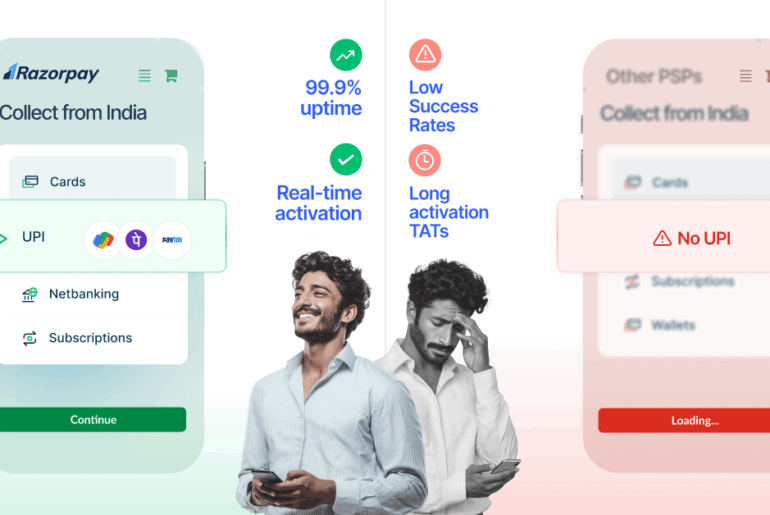Sending money to a loved one abroad, whether for their education, medical needs, or just as a gift, used to be a journey filled with paperwork and complex rules. It felt like navigating a maze. Then, in 2004, the Reserve Bank of India (RBI) introduced a policy that changed everything, making the process simpler and more accessible for every Indian resident. This is the story of the Liberalised Remittance Scheme (LRS).
At its heart, LRS is a framework that allows you to send up to $250,000 abroad in a single financial year with minimal fuss. It’s a policy designed to empower individuals, giving them the freedom to manage their global financial needs easily.
Key Takeaways
Before we dive deep, here’s a quick snapshot of what you need to remember about LRS:
- Annual Limit: You can send up to $250,000 per person in a financial year (April to March).
- Who’s Eligible: It’s open to all resident Indians, including minors (with a guardian’s co-signature). It is not available for corporate entities, partnerships, or trusts.
- Wide Range of Uses: You can use it for almost anything, from paying for overseas education and medical treatments to investing in foreign stocks and property.
- Tax is a Factor: A Tax Collected at Source (TCS) applies to remittances above a certain threshold, but this can be claimed back when you file your income tax returns.
What Does LRS Mean?
The Liberalised Remittance Scheme (LRS) was introduced by the RBI as part of the Foreign Exchange Management Act (FEMA), 1999. The main goal was to simplify the process for resident Indians to send money out of the country. Before LRS, every transaction required navigating a complex web of regulations. LRS liberalised these rules, creating a straightforward pathway.
The scheme sets a clear annual cap of $250,000 per person per financial year. This limit is cumulative, meaning it covers all the money you send abroad under LRS within that year, regardless of the number of transactions. The beauty of LRS is that it covers both Current Account Transactions (like payments for services, travel, education) and Capital Account Transactions (like investments in assets).
For example, if you send $50,000 for your child’s university fees (a current account transaction) and later invest $100,000 in overseas stocks (a capital account transaction) in the same year, you would have used $150,000 of your $250,000 limit.
Who is Eligible for LRS?
The scheme is designed for individuals, but not everyone can use it. Here’s a quick breakdown:
Who can use LRS?
- All resident individuals in India.
- Minors are also eligible, but the LRS declaration form (Form A2) must be countersigned by their legal guardian.
Who cannot use LRS?
- Corporations and companies.
- Partnership firms.
- Hindu Undivided Families (HUF).
- Trusts.
- Non-Resident Indians (NRIs).
To make any remittance under LRS, having a Permanent Account Number (PAN) is mandatory. Your bank will also ensure your Know Your Customer (KYC) details are complete and up-to-date.
Permissible Uses Under LRS
So, what exactly can you use this $250,000 for? The RBI has defined a broad list of permissible transactions, which are split into two categories.
Current Account Transactions
These are generally payments for day-to-day needs or services.
- Overseas Education: Paying tuition fees and covering living expenses for students abroad.
- Travel & Private Visits: Funds for tourism or visiting family and friends overseas (except for travel to Nepal and Bhutan).
- Medical Treatment: Covering the costs of medical procedures in a foreign country.
- Gifts & Donations: Sending money as a gift to relatives or donating to charitable organisations.
- Maintenance of Close Relatives: Financially supporting family members living abroad.
- Business Trips: Expenses related to attending conferences, meetings, or training.
- Emigration: Funds needed to cover costs like visa fees when moving to another country.
- Employment Abroad: Sending money to support a relative who has just started a job overseas.
Capital Account Transactions
These transactions are typically for acquiring assets or making investments.
- Investing in Overseas Markets: Buying foreign stocks, bonds, or mutual funds.
- Buying Property Abroad: Purchasing residential or commercial real estate in another country.
- Opening a Foreign Bank Account: To manage funds or investments overseas.
- Setting up Businesses: Establishing wholly-owned subsidiaries or joint ventures abroad (subject to certain conditions).
- Extending Loans: Providing rupee loans to NRI relatives as defined under the Companies Act.
Did you know?
When the LRS was first introduced in 2004, the annual limit was just $25,000. It has been gradually increased over the years to the current $250,000 to keep pace with the evolving economic landscape.
Ineligible or Prohibited Transactions
While LRS is quite liberal, it isn’t a free-for-all. The RBI has a strict list of prohibited transactions to prevent misuse of the scheme. You cannot use LRS for:
- Purchasing lottery tickets, sweepstakes, or banned magazines.
- Any form of speculative activity or margin trading in foreign exchange.
- Sending money to countries identified by the Financial Action Task Force (FATF) as “non-cooperative.”
- Any transactions with individuals or entities suspected of involvement in terrorist activities.
- Buying Foreign Currency Convertible Bonds (FCCBs) issued by Indian companies in the secondary market abroad.
- Gifting foreign currency to another Indian resident for them to credit to their foreign currency account.
LRS Limits & Tax Collected at Source (TCS)
Understanding the financial aspects of LRS is crucial. The $250,000 limit is the first thing to remember. This limit is tracked by the government using your PAN card, so all your remittances through different banks are clubbed together.
The second important aspect is Tax Collected at Source (TCS). When you send money abroad under LRS, the government collects a tax at the source. The rules for this were updated in Budget 2025.
Here’s how it generally works:
- Up to ₹10 lakh: No TCS is levied on total remittances up to ₹10 lakh in a financial year.
- Above ₹10 lakh: For amounts exceeding this limit, a TCS of 5% is applicable.
- Education Loans: If the remittance is for educational purposes and is financed by a loan from a recognized financial institution, no TCS is applicable.
The good news is that the TCS amount is not a sunk cost. You can claim it back as a credit or a refund when you file your Income Tax Return (ITR). The amount will be reflected in your Form 26AS.
How to Make an LRS Remittance
The process is quite simple and is handled by Authorised Dealer (AD) banks. Here are the typical steps:
- Approach Your Bank: Visit the branch of an Authorised Dealer bank where you hold an account.
- Fill Out Form A2: You will need to fill out Form A2, which is a declaration form for purchasing foreign exchange. You’ll need to specify the amount and the purpose of the remittance.
- Provide Documents: Submit your PAN card, passport, and any other supporting documents required for the specific purpose. For example, for education, you might need to provide the university’s offer letter and fee schedule.
- KYC Compliance: The bank will verify your KYC details to ensure they are compliant with AML (Anti-Money Laundering) regulations.
- Fund Transfer: Once everything is in order, the bank will debit the equivalent Indian rupee amount from your account and process the transfer to the overseas beneficiary account.
Pro Tip
It’s a good practice to handle all your LRS remittances for a financial year through a single bank branch. This makes it easier for you and the bank to track your cumulative usage of the $250,000 limit and ensure compliance.
Benefits of Using LRS
The Liberalised Remittance Scheme has been a game-changer for many. Its key benefits include:
- Financial Freedom: It allows you to freely send money abroad for a host of reasons without seeking prior RBI approval (as long as you are within the limit).
- Global Opportunities: It facilitates access to global education, top-tier healthcare, and international investment opportunities, helping you diversify your financial portfolio.
- Support for Family: It provides a simple and reliable channel to support loved ones living abroad, whether for their daily expenses or during emergencies.
- Simplified Compliance: LRS has made the entire process of outward remittance transparent and much less cumbersome than the older, more restrictive methods.
Latest Updates & Regulatory Changes
The LRS framework is dynamic and subject to updates from the RBI and the government. The most significant recent change, as highlighted in the info dump’s mention of Budget 2025, is related to TCS:
- Increased TCS Threshold: The threshold for zero TCS was raised from ₹7 lakh to ₹10 lakh, providing more breathing room for smaller remittances.
- RBI Monitoring: The RBI continues to emphasize strict monitoring by banks to prevent misuse of the scheme, particularly for speculative purposes. Always ensure your transactions are for genuine, permissible purposes.
Common Mistakes & How to Avoid Them
While LRS is simple, a few common slip-ups can cause issues. Here’s what to watch out for:
- Exceeding the Limit: Forgetting to track cumulative remittances across different transactions can lead to accidentally breaching the $250,000 limit. Always keep a personal record.
- Using the Wrong Purpose Code: Filling Form A2 with an incorrect purpose code can lead to compliance issues. Be clear and accurate about why you are sending the money.
- Not Accounting for TCS: Forgetting about the TCS deduction can mess up your financial planning. Factor in the tax when calculating the total cost of your remittance.
- Issues with Minor’s Remittance: Forgetting the guardian’s signature on a minor’s Form A2 is a common procedural error that can delay the transaction.
Razorpay’s Solutions for LRS-Compliant Transfers
For businesses that need to make outward remittances for permissible transactions like paying for international SaaS tools, overseas services, or freelancer contracts, Razorpay offers a compliant and efficient solution. Our platform provides full foreign exchange transparency and real-time tracking for your transfers, with automated TCS reports for easy reconciliation.
Simplify International Payments with Razorpay
Power your global business the right way. Switch from personal remittances to a fully compliant, business-grade payment platform.
Frequently Asked Questions (FAQs)
Can each member of my family remit $250,000 separately?
Yes, absolutely. The LRS limit is for each individual. So, a family of four (husband, wife, and two children) can collectively remit up to $1,000,000 ($250,000 x 4) in a financial year, provided each person has a bank account and PAN.
Can Non-Resident Indians (NRIs) use LRS?
No. The Liberalised Remittance Scheme is only available to resident individuals. NRIs have different routes to remit money abroad from their NRE, NRO, or FCNR accounts, which are governed by separate regulations.
Is buying real estate abroad allowed under LRS?
Yes. Purchasing property overseas is a permitted capital account transaction under the LRS framework.
What happens if I need to remit more than the $250,000 limit?
In most cases, you cannot exceed the limit. However, there are exceptions for specific purposes like emigration, medical treatment, or education if the requirement from the foreign institution exceeds $250,000. For any other reason, you would need to seek prior approval from the Reserve Bank of India.
Is the TCS paid on LRS transactions refundable?
Yes. The TCS deducted on your remittance can be claimed as a credit against your final tax liability or as a refund when you file your annual Income Tax Return (ITR).


